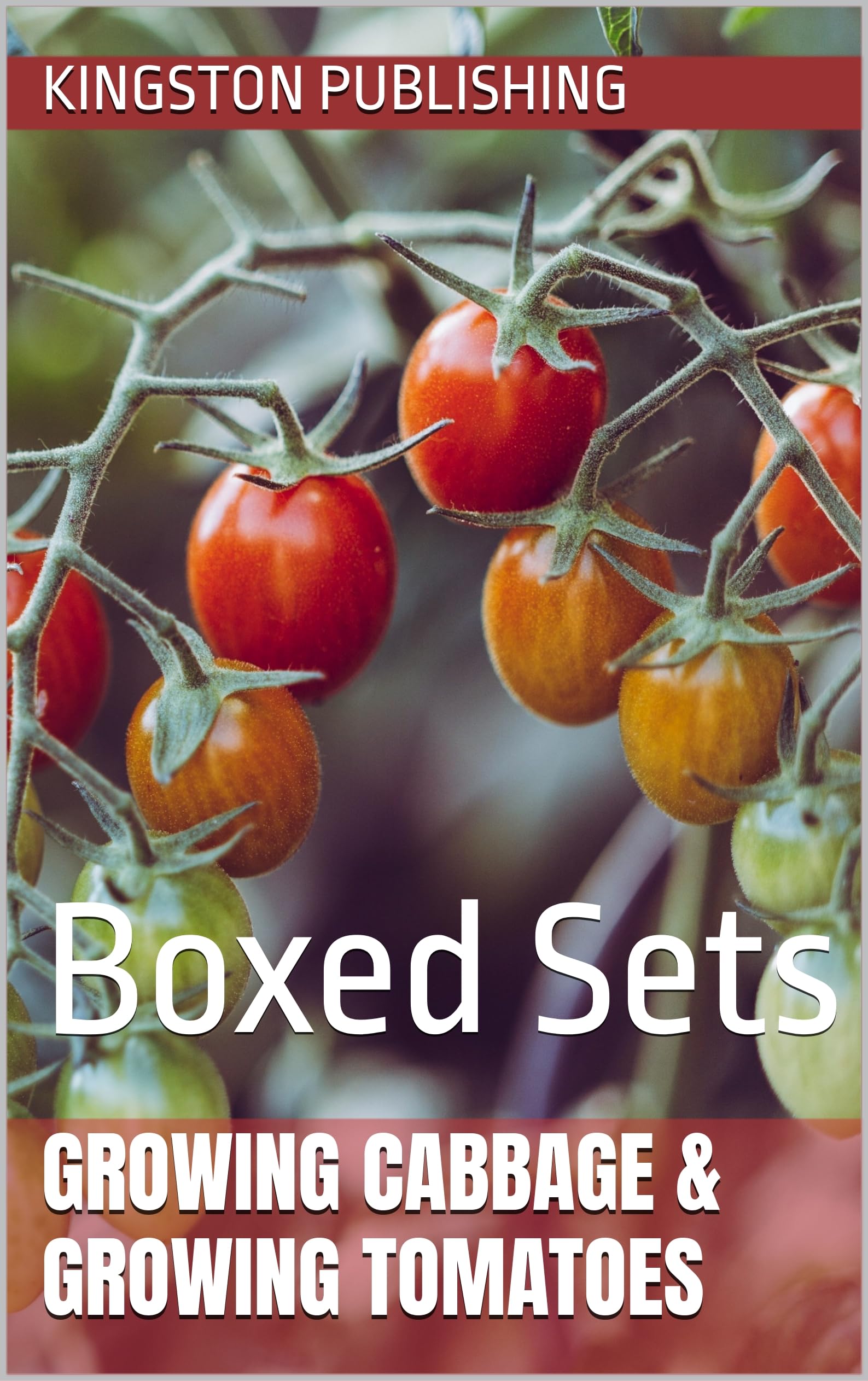Here are helpful things you’ll learn from these two books about growing cabbage and tomatoes.Growing CabbageVarieties of Cabbage: This book will introduce you to different types of cabbageSoil Preparation: You’ll learn how to prepare the soil, including pH requirements (usually between 6.0 and 6.8), and how to enrich it with compost or manure.Planting Techniques: The book will explain the best times to plant cabbage seeds or seedlings and the proper spacing to ensure healthy growth.Watering Needs: Detailed information on how much water cabbage plants need at different stages of growth will be provided, including how to maintain consistent moisture levels.Fertilization: Guidance on the types and schedules of fertilization to ensure robust growth, often focusing on nitrogen-rich fertilizers.Pest and Disease Management: Tips on identifying and controlling common pests (like cabbage worms and aphids) and diseases (such as black rot and clubroot).Climate Requirements: Information on the ideal climate conditions for growing cabbage, including temperature ranges and frost tolerance.Harvesting Techniques: Instructions on how to know when cabbage is ready to harvest and the best techniques to use to avoid damaging the plant.Companion Planting: Insights into which plants grow well alongside cabbage, such as beans, onions, and aromatic herbs, to deter pests and improve growth.Storage Methods: Tips on how to store harvested cabbage to maintain its freshness, including proper cleaning, refrigeration, and potential long-term storage options like fermentation.Growing TomatoesVarieties of Tomatoes: This book will cover different tomato varieties.Soil and Bed Preparation: You’ll learn how to prepare the soil, emphasizing the need for well-drained, nutrient-rich soil with a pH between 6.2 and 6.8.Seed Starting and Transplanting: Detailed guides on starting seeds indoors and transplanting seedlings outdoors, including timing and techniques to avoid transplant shock.Staking and Support: Information on the various methods for supporting tomato plants, such as staking, caging, and trellising, to keep them upright and healthy.Watering Practices: Insights into proper watering techniques, emphasizing consistent moisture, deep watering practices, and avoiding overhead watering to prevent disease.Fertilization and Nutrient Needs: Guidance on fertilization schedules and the importance of nutrients like nitrogen, phosphorus, and potassium for optimal tomato growth.Pruning and Maintenance: Tips on pruning methods to improve air circulation, reduce disease, and promote better fruit production.Pest and Disease Control: Detailed information on common pests (such as tomato hornworms and whiteflies) and diseases (like blight and blossom end rot), including organic and chemical control methods.Pollination: Understanding the role of pollination in fruit set, and techniques to improve pollination, such as gently shaking plants or attracting pollinators.Harvesting and Ripening: Instructions on how to identify ripe tomatoes, the best harvesting practices to avoid bruising, and techniques for ripening tomatoes off the vine if necessary.
save
$2.99Growing Leafy Cabbage & Juicy Tomatoes : Boxed Sets
$0.00$2.99
Learn everything you need to know about growing cabbage and tomatoes, from soil preparation and planting techniques to pest management and harvesting tips for a successful garden.











